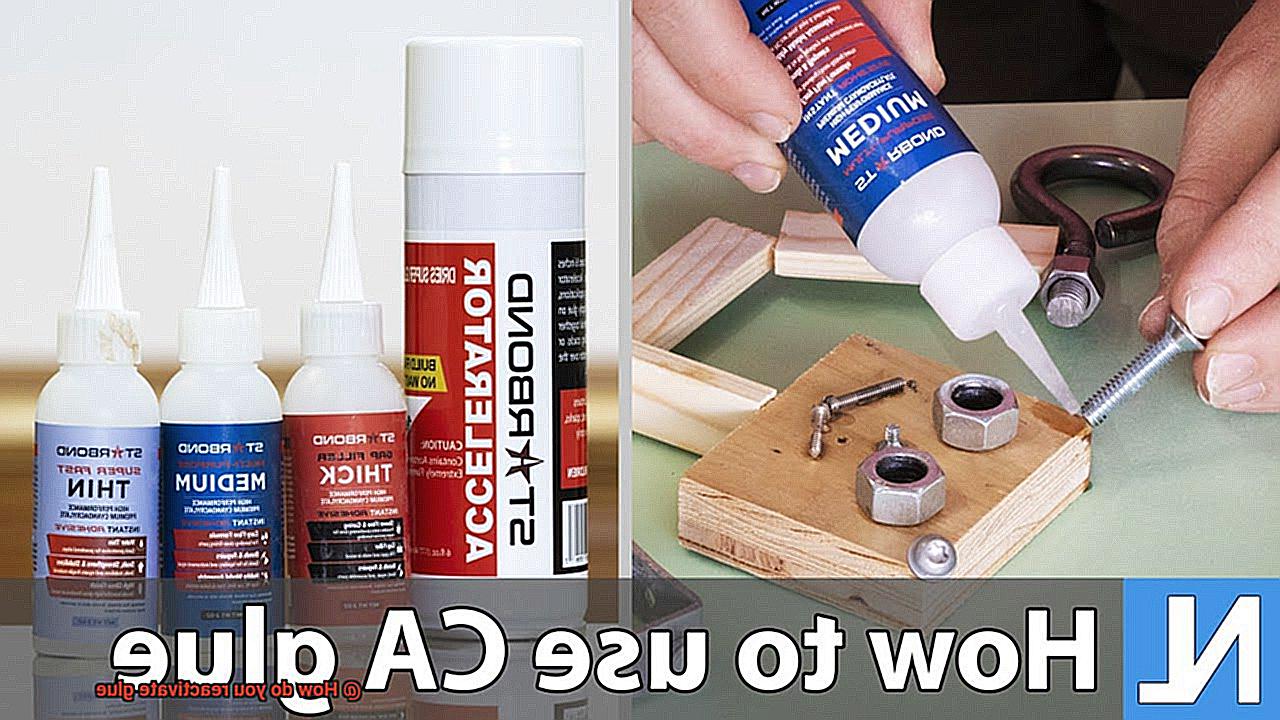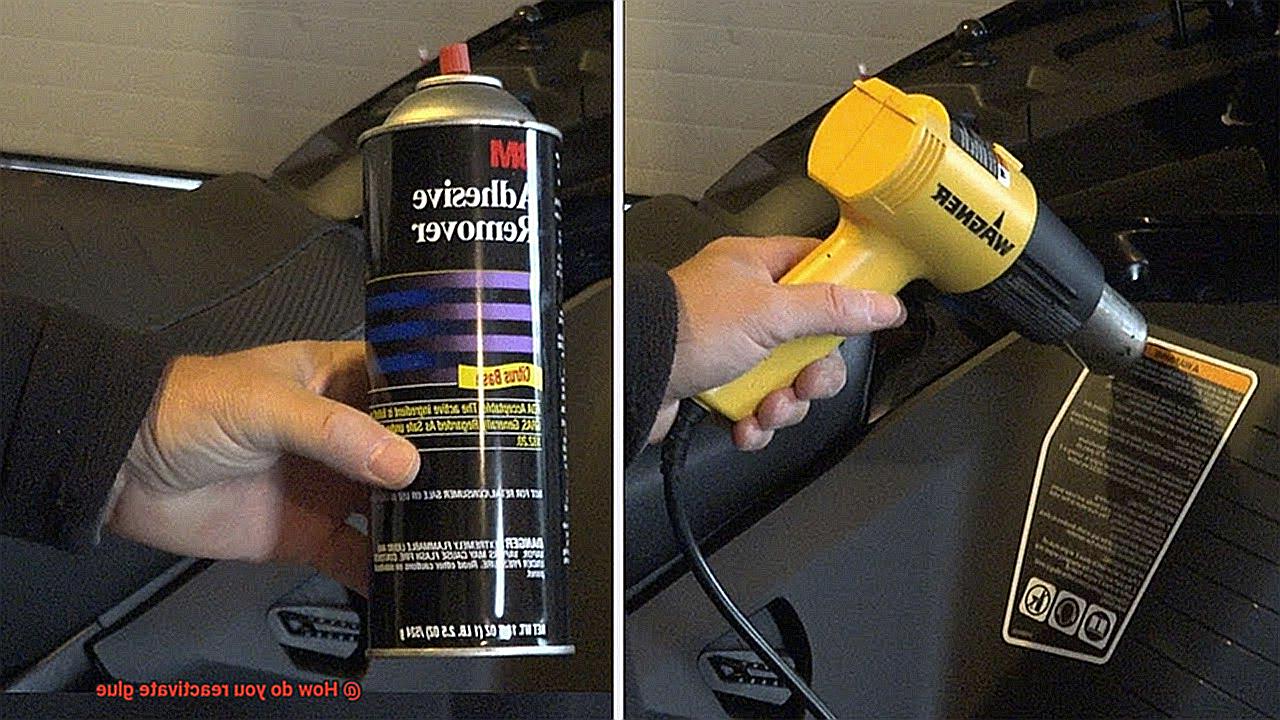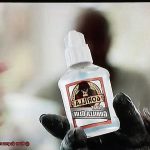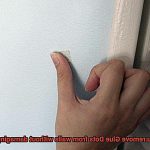Get ready to embark on a thrilling journey into the world of glue reactivation. Whether you’re an artsy craft lover or just someone who hates throwing away perfectly good adhesive, learning how to give your glue a second chance is going to be a game-changer.
Glue, oh glorious glue. It comes in all shapes and sizes – epoxy, super glue (aka cyanoacrylate), and trusty old white glue. But sometimes, these sticky wonders lose their mojo and leave us hanging (literally.). Fear not, my friends, because reactivating glue is the secret sauce that will save you time and money.
In this mind-blowing article, we’ll unravel the mysteries behind dried-out glues. We’ll uncover the reasons why they lose their stickiness and reveal mind-bending techniques to bring them back from the dead. From understanding why your glue went MIA to discovering powerful methods for reviving different types of adhesives – we’ve got your back.
So buckle up, folks. Get ready to unleash the magic of reactivated glue and make your adhesive dreams come true once again. Let’s dive headfirst into these mind-boggling techniques that will have you sticking with confidence in no time.
Different Types of Glue and How to Reactivate Them
Contents
- 1 Different Types of Glue and How to Reactivate Them
- 2 Water-Based Glue: How to Reactivate It
- 3 Hot Glue: How to Reactivate It
- 4 Super Glue: How to Reactivate It
- 5 Wood Glue: How to Reactivate It
- 6 Epoxy Glue: How to Reactivate It
- 7 Safety Precautions When Attempting to Reactivate Glue
- 8 Tips for Successful Glue Application and Bonding
- 9 Conclusion
Glue is a versatile adhesive used in various industries and for different purposes, such as crafting, woodworking, and repairs. There are several types of glue available on the market, each with its own unique properties and uses. Here, we will discuss the common types of glue and how to reactivate them if they become dried out or lose their adhesive properties over time.
Water-based glue:
Water-based glue, such as white glue or school glue, is a popular choice for crafting and general household use. It is easy to work with and dries clear. If water-based glue becomes dried out, it can be reactivated by adding a small amount of water. Start by adding a few drops of water to the dried-out glue and stirring it until it reaches the desired consistency. However, caution should be taken not to add too much water, as it can weaken the adhesive strength.
Hot glue:
Hot glue is commonly used in crafts and DIY projects due to its quick-drying nature. If hot glue becomes dried out, it can be reactivated by heating it up again. Use a hot glue gun or a hairdryer on a low heat setting to warm up the dried glue. Once the glue becomes soft and pliable, press the surfaces together and hold them until the glue sets.
Super glue:

Super glue is known for its strong adhesive properties but can dry out quickly. To reactivate super glue, you have a couple of options. Firstly, you can apply heat to the glued area using a hairdryer or warm water. The heat will soften the dried glue, making it easier to remove or reposition. Secondly, acetone (nail polish remover) can be used to dissolve super glue. Apply a small amount of acetone to a cloth or cotton swab and gently rub the glued area until the bond breaks.

Wood glue:
Wood glue is commonly used in woodworking projects. If wood glue has dried out, it can be reactivated by applying moisture to the glued area. Use a wet cloth or sponge to dampen the dried glue and let it sit for a few minutes. The moisture will penetrate the dried glue and make it more pliable. Once the glue is soft, you can separate the bonded pieces or add more glue if needed.
Epoxy glue:

Epoxy glue is a strong adhesive that cures through a chemical reaction. If epoxy glue has hardened, it cannot be reactivated in the same way as other glues. However, you can try sanding the dried epoxy to roughen the surface and create better adhesion. Once sanded, apply a fresh layer of epoxy adhesive to bond the surfaces.
Conclusion:
Understanding how to reactivate different types of glue can save time, money, and resources by avoiding unnecessary waste or re-purchasing of glue. However, it is important to follow safety precautions and use the appropriate methods for each type of glue. Always read the instructions on the glue container and test your reactivated glue on a small area before applying it to your project.
Water-Based Glue: How to Reactivate It
Water-based glue is a versatile adhesive that is commonly used for various crafting and household purposes. However, if left open or stored improperly, it can dry out and lose its effectiveness. The good news is that water-based glue can be reactivated and restored to its original consistency and bonding strength. Here’s how you can bring your dried-out glue back to life:
The Water Method:
- Start by adding a few drops of water to the dried-out glue.
- Mix it well using a stir stick or a toothpick.
- Gradually add more water until you achieve the desired thickness and consistency.
- Be cautious not to add too much water at once, as it may dilute the glue too much and affect its bonding ability.
The Heat Method:
- Place the glue bottle or container in a warm water bath for a few minutes.
- The heat will soften the dried glue, making it more pliable.
- Afterward, give the glue a good stir to ensure thorough mixing before use.
Remember that different water-based glues may require varying amounts of water or respond differently to heat. It’s always a good idea to consult the manufacturer’s instructions or conduct a small test before attempting to reactivate the glue on a larger scale.
If the glue is too dry or damaged to be effectively reactivated, it is best to dispose of it and purchase a fresh bottle or container. Using compromised glue may result in weak bond strength and unsatisfactory results.
To prevent premature drying of water-based glue, always seal the container tightly after use and store it in a cool, dry place away from direct sunlight or extreme temperatures.
Hot Glue: How to Reactivate It
Hot glue is a remarkable adhesive that finds its use in a wide range of applications, from crafting to DIY projects and even industrial settings. Its quick-drying and strong bonding properties make it an invaluable tool. However, there are occasions when you may need to reactivate hot glue that has already dried or cooled down.
To reactivate thermoplastic hot glue, you must first determine the type of hot glue you are working with. There are two main types: thermoplastic and thermosetting. Thermoplastic hot glue can be reheated and reactivated, while thermosetting hot glue cannot be reactivated once it has cooled down.
To begin the reactivation process, gather your materials. You will need a heat source such as a hot glue gun or a hairdryer. Apply heat to the dried or cooled down hot glue by holding the heat source a few inches away from the surface of the glue. Move the heat source in a circular motion to distribute the heat evenly.
As you apply heat, the hot glue will gradually soften and become pliable again. Test its reactivity by gently pressing on the softened glue with a tool or your finger. If it feels sticky and begins to adhere, then it has been successfully reactivated.
It is important to note that reactivated hot glue may not possess the same adhesive strength as freshly applied hot glue. Therefore, if necessary, use additional adhesive or reinforcement for added strength.
Remember to exercise caution when working with heat sources. Excessive heat can cause burns or damage certain materials. Always follow safety precautions and test the heat source on a small area before applying it to a larger surface.
Super Glue: How to Reactivate It
Super glue, also known as cyanoacrylate adhesive, is a popular adhesive used for various purposes such as bonding plastics, ceramics, wood, metal, and more. Sometimes, when using super glue, we may encounter situations where the glue has dried out or become hard in the bottle or on the surface it was applied to. Reactivating super glue can be useful in such cases, as it allows us to extend its usability and make repairs or adjustments.
One common method to reactivate super glue is by applying heat. Heat can soften the hardened glue and make it more malleable again. To apply heat, you can use a hairdryer, a heat gun, or even a microwave oven. However, it is essential to exercise caution while doing so to avoid damaging the glued surfaces or causing harm to yourself. Set the hairdryer or heat gun to a low or medium heat setting and direct the hot air towards the hardened glue for a few seconds. This should help soften it without overheating or melting it completely. If using a microwave oven, place the glued item inside a microwave-safe container and heat it on low power for short intervals. Check the progress after each interval and continue heating until the glue softens enough for reactivation.
Another method to reactivate super glue is by using solvents. Solvents like acetone or nail polish remover can dissolve the hardened glue and restore its adhesive properties. Soak a cloth or cotton ball with the solvent and gently rub it over the dried glue. Allow the solvent to penetrate the glue for a few minutes before attempting to separate or reposition the glued items. It is important to note that solvents like acetone are highly flammable and may cause damage to certain surfaces. Therefore, always perform a patch test on an inconspicuous area before applying solvents to the glued surface. Additionally, work in a well-ventilated area when using solvents to avoid inhaling the fumes.
In some cases, mechanical means can be employed to reactivate super glue. For example, if the glue has hardened between two surfaces, applying pressure or using tools like a knife or screwdriver may help break the bond and reactivate the glue. However, caution must be exercised to prevent damage to the surfaces or injury to yourself. Wear protective gloves and goggles when using mechanical means to reactivate super glue.
Wood Glue: How to Reactivate It
Wood glue, a staple adhesive for woodworking projects, may sometimes dry out or lose its stickiness over time. Fortunately, reactivating wood glue is a straightforward process when done correctly.
One effective method to reactivate wood glue is by applying heat. Heat softens the dried glue, making it more pliable. To apply heat, use a household iron set to low or medium heat. Allow the iron to warm up, then place a clean cloth or parchment paper over the dried glue. Gently press the iron on top for a few seconds. Exercise caution to avoid excessive heat that could damage the wood.
Moisture or water can also help reactivate wood glue. Begin by moistening a clean cloth or sponge with water, ensuring it is not dripping wet. Rub the moist cloth or sponge over the dried glue, allowing the water to penetrate and soften the adhesive. Repeat this process as needed until the desired stickiness is achieved.
Additionally, adding fresh wood glue to the dried glue can reactivate it. Apply a small amount of new wood glue directly onto the dried glue and spread it evenly using a spatula or brush. The fresh glue will bond with the dried glue, restoring its adhesive properties. This method works best for small areas of dried glue.
It is important to note that not all types of wood glue can be easily reactivated. Specialized wood glues may have unique chemical compositions that make reactivation challenging. Always refer to the instructions or manufacturer’s recommendations before attempting to reactivate any type of glue.
Epoxy Glue: How to Reactivate It
Reactivating epoxy glue can be achieved through various methods, including heat, solvents, and mechanical means. Each method has its own specific temperature requirements and types of solvents that can be used. It’s important to follow safety precautions and consult the manufacturer’s instructions for the specific epoxy glue being used.
One effective method to reactivate epoxy glue is by applying heat. By using a heat gun or a hairdryer on high heat setting, you can soften the hardened glue and make it more malleable. Remember to hold the heat source at a safe distance from the epoxy surface and move it back and forth to evenly distribute the heat. Be cautious not to overheat the area, as excessive heat can cause damage or discoloration.
Another way to reactivate epoxy glue is by using a solvent. Acetone, a commonly used solvent, can break down the epoxy bond. Apply acetone to a cloth or sponge and gently rub the hardened epoxy surface. Allow the solvent to penetrate the adhesive for a few minutes before attempting to remove or reposition the glued objects. However, it’s important to note that acetone may also damage certain surfaces or materials, so it’s essential to test it on a small, inconspicuous area first.
If heat and solvent methods are not successful, mechanical means can be employed. This involves physically removing the hardened epoxy using tools like a scraper, chisel, or sandpaper. It requires careful precision and patience to avoid damaging the underlying surface.
To ensure safety during the reactivation process, wear protective gloves and goggles when handling solvents or using tools. Work in a well-ventilated area to minimize exposure to fumes. Follow the manufacturer’s instructions and recommendations for temperature limits, types of solvents, and safety precautions.
Safety Precautions When Attempting to Reactivate Glue
When it comes to reactivating glue, safety should always be your top priority. Working with adhesive substances can pose risks to your well-being if proper precautions are not taken. To ensure a safe reactivation process, follow these essential safety measures.
- Read and Follow Instructions: Carefully read and follow the instructions provided by the manufacturer of the glue. Different types of adhesives may have different reactivation methods, so understanding the specific instructions for the glue you are using is crucial. This will help you avoid any unforeseen hazards.
- Gather Safety Equipment: Before starting the reactivation process, gather all the necessary safety equipment. This may include:
- Gloves: Protect your hands from direct contact with the glue or any reactivation agents. Gloves can prevent skin irritation or burns.
- Safety Goggles: Shield your eyes from potential splashes or fumes that may harm your vision.
- Well-Ventilated Area or Respirator: If working with strong adhesive fumes, ensure you are in a well-ventilated area or wear a respirator to protect your respiratory system.
- Work in a Well-Lit and Ventilated Space: It is crucial to work in a well-lit area with good ventilation. Open windows or use fans to improve air circulation and prevent inhalation of toxic fumes that may be released when heating or reactivating certain types of glue. Wearing a mask can provide an extra layer of protection against inhaling harmful substances.
- Protect Your Skin and Eyes: Wear gloves to avoid direct contact with the glue or reactivation agents. If accidental skin contact occurs, promptly wash the affected area with soap and water. Seek medical attention if any adverse reactions occur. In case of contact with your eyes, rinse them thoroughly with water for at least 15 minutes and seek immediate medical assistance.
- Keep Away from Flames and Ignition Sources: Some glues may be flammable or have low flash points. To prevent accidents or fires in your workspace, keep them away from open flames or any sources of ignition.
- Use Proper Tools and Equipment: When heating or using heat sources to reactivate glue, ensure you are using appropriate tools and equipment designed for that purpose. Avoid using makeshift methods that can increase the risk of accidents or injuries.
- Exercise Caution with Sharp Objects: Accidental slips or cuts can occur when handling sharp objects like knives or scissors during the reactivation process. Use proper tools and be mindful of your actions throughout the entire process.
Tips for Successful Glue Application and Bonding
Surface Preparation
Proper surface preparation is crucial for successful glue application and bonding. Before applying glue, it is important to clean the surfaces thoroughly to remove any dirt, dust, or grease that may interfere with the adhesive’s effectiveness. Use a mild detergent and water solution to clean the surfaces, followed by a rinse and thorough drying. This will ensure that the glue adheres properly to the surfaces and creates a strong bond.
Choosing the Right Type of Glue
Different types of glues have different properties and are designed for specific materials or applications. It is important to choose the right type of glue for your project to ensure a strong and durable bond. For example, wood glue is ideal for woodworking projects, while epoxy is commonly used for bonding metal, plastic, or glass. Read the label or consult with an expert to determine the best glue for your specific needs.
Applying an Even Layer of Glue
When applying glue, it is important to apply an even layer across the surface to be bonded. Uneven application can result in weak spots or incomplete bonding. To achieve an even layer, use a brush, roller, or applicator specifically designed for glue. This will help ensure that the adhesive is distributed uniformly and creates a strong bond.
Considering Clamp Usage
In some cases, using clamps or other forms of pressure can enhance the bonding strength. This is particularly important when working with porous materials or when a stronger bond is desired. Applying pressure evenly and avoiding excessive force is crucial to prevent damage to the glued surfaces. Using clamps can help hold the pieces together while the glue cures, creating even pressure across the entire bond and minimizing any gaps.
Allowing Sufficient Drying/Curing Time
After applying the glue and bonding the surfaces, it is important to allow sufficient drying or curing time as per the manufacturer’s instructions. Rushing this process can lead to weak bonds or even complete failure. Patience is key when it comes to glue application and bonding. Allow the adhesive enough time to fully dry and develop its maximum strength before subjecting it to any stress or load.
Testing the Bond
Once the glue has dried or cured, it is advisable to test the bond by applying gentle pressure or stress to ensure it holds up. This step is particularly important for critical or load-bearing applications where a strong bond is necessary for safety and effectiveness. Testing the bond will give you confidence in the strength of the bond and help you identify any potential weaknesses before using the glued objects in their intended applications.
DhNsncpt_Cc” >
Conclusion
Reactivating glue is a common problem that many people face. Whether you’re crafting or fixing something, knowing how to revive dried-out glue can save you time and money. So, what’s the solution?
One option is to apply heat. Using a hairdryer or heat gun, direct the heat towards the dried-out glue in circular motions. Watch as it softens and becomes sticky again, ready for use.
Moisture can also do the trick. Take a damp cloth or sponge and gently rub it over the dried-out glue.






